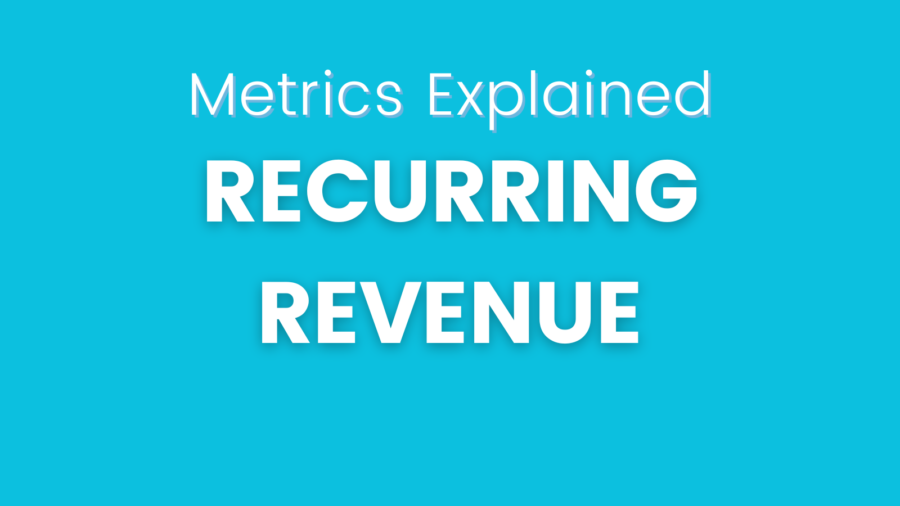Recurring revenue has become a key driver of financial stability and long-term success. Understanding the nuances of recurring revenue models and their impact on business sustainability is essential for companies seeking to build a resilient and predictable revenue stream. This guide will delve into the intricacies of recurring revenue, its various forms, benefits, and strategies for implementation.
Defining Recurring Revenue
Recurring revenue refers to a business’s predictable and consistent income stream at regular intervals. It is often associated with subscription-based models, where customers pay a recurring fee for continued access to a product or service. However, recurring revenue can also encompass other forms, such as retainer fees, maintenance contracts, and usage-based fees, providing businesses with a stable financial foundation that fosters growth and stability.
Forms of Recurring Revenue
- Subscription-Based Revenue
Subscription-based models involve customers paying a predetermined fee at regular intervals, typically monthly or annually, in exchange for continued access to a product or service. This model ensures a steady revenue stream and fosters customer loyalty and retention through ongoing value delivery.
- SaaS (Software as a Service) Revenue
SaaS revenue revolves around providing customers with access to software applications on a subscription basis. This model offers the advantage of continual software updates, customer support, and the flexibility to scale services based on the customer’s evolving needs.
- Retainer-Based Revenue
Retainer-based models involve clients paying a set fee to retain ongoing services or access to a professional, such as legal or consulting services, over a specific period. This model provides businesses with a predictable income source and encourages a long-term, mutually beneficial relationship with clients.
Benefits of Recurring Revenue
- Predictable Cash Flow
Recurring revenue models provide businesses with a predictable and consistent cash flow, enabling better financial planning and resource allocation. This predictability fosters stability, especially during economic downturns or market fluctuations.
- Enhanced Customer Retention
Businesses can foster higher customer satisfaction and retention rates by offering continuous value and maintaining ongoing customer relationships. Satisfied customers are likelier to continue their subscriptions or retain services, leading to long-term customer loyalty and advocacy.
- Scalability and Business Growth
Recurring revenue models provide a foundation for scalable growth, allowing businesses to expand their offerings, invest in new technologies, and explore additional revenue streams. This scalability facilitates sustained business development and market expansion.
Strategies for Implementing Recurring Revenue Models
- Value-Centric Offerings
Build subscription models or service packages that offer continuous value to customers. Regularly assess and enhance the value proposition to ensure customers perceive their recurring investment’s ongoing benefits.
- Customer-Centric Engagement
Prioritize customer engagement and satisfaction by providing excellent customer support, personalized experiences, and proactive communication. Engaged customers are more likely to renew subscriptions and advocate for the business.
- Flexibility and Customization
Offer flexible subscription plans that cater to various customer segments, allowing customers to choose plans that align with their specific needs and budget. Providing customization options enhances customer satisfaction and encourages long-term commitment.
- Continuous Innovation
Continuously innovate and upgrade products or services to meet evolving customer demands and industry trends. Regular product enhancements and feature updates demonstrate the commitment to providing ongoing value and strengthening customer loyalty.
Challenges and Considerations
- Customer Churn
Managing customer churn is a critical challenge for businesses relying on recurring revenue models. Implementing effective customer retention strategies, such as personalized customer experiences and proactive customer support, can help mitigate churn rates.
- Market Saturation
In increasingly competitive markets, differentiating products and services to attract and retain customers can be challenging. Constant market analysis, customer feedback integration, and innovation are crucial for staying ahead of the competition.
Conclusion
Recurring revenue models are the backbone of sustainable business growth, providing companies with the financial stability and predictability needed to thrive in today’s dynamic marketplace. By implementing customer-centric strategies, fostering continuous innovation, and overcoming potential challenges, businesses can leverage the power of recurring revenue to build enduring customer relationships, foster scalability, and drive long-term success. Understanding the intricacies of recurring revenue is not just about financial stability; it’s about laying the foundation for a resilient and prosperous future in an ever-evolving business landscape.





